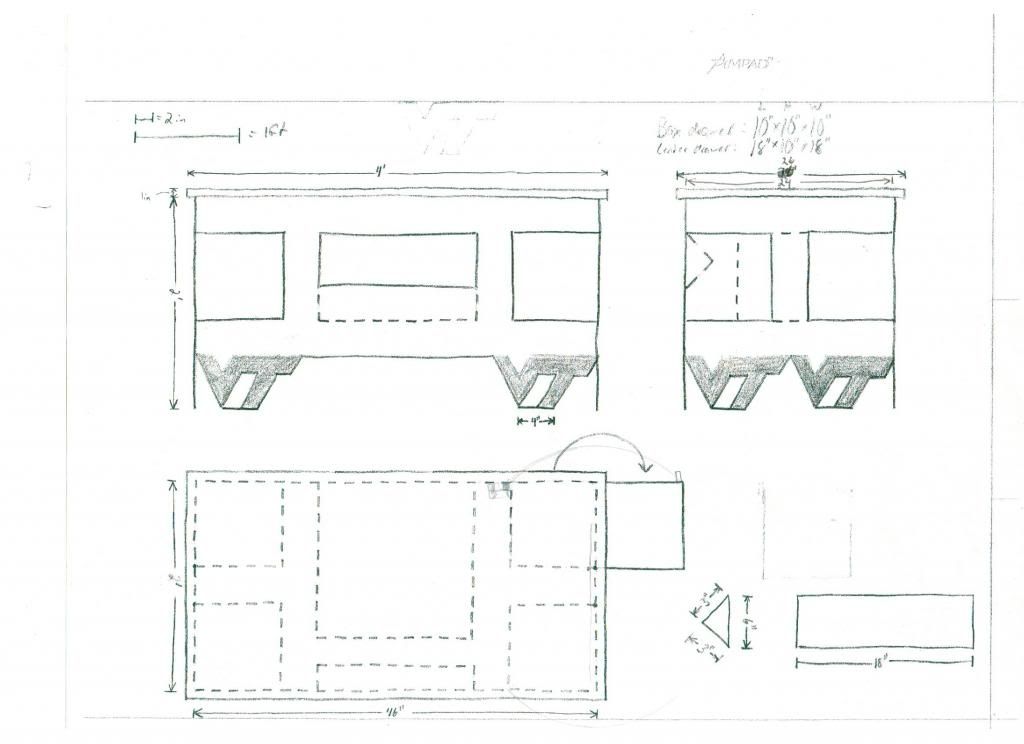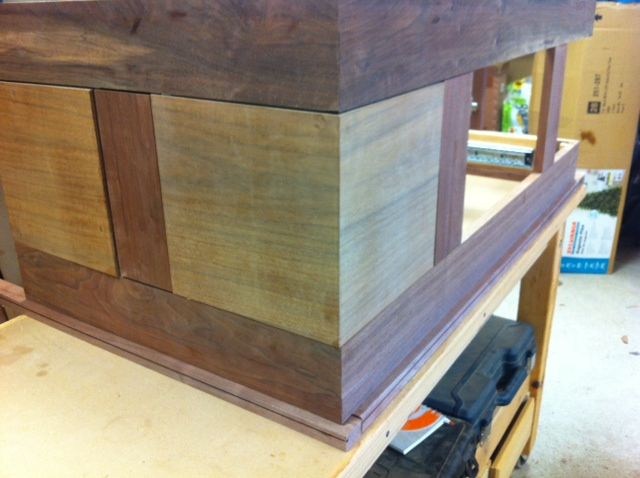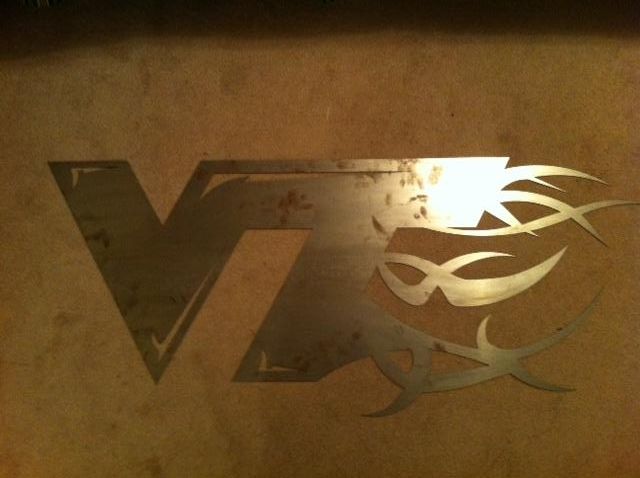Frank McKinney
Member
- Messages
- 51
- Location
- Stafford, VA
It's been a long time since I was last here, but I've finally gotten around to working in the shop again. I'm working to finish a coffee table that I started for my son quite awhile ago...longer than I care to admit. The design is something his room mate came up with and is well beyond my skill level, but I'm giving it a try. I'm almost done with the cabinet portion, except for the sanding/finishing, and need to construct a top for it and finish it or have it finished by someone. The questions are in bold so they'll be easy to find.

He's decided not to use the VT feet, but instead have a 3/4" base with a simple cut to mirror the lines/gaps in the cabinet.

The cabinet portion is made from walnut and walnut plywood (for the swing out drawers, drawer front, and tilt out panel). I'm looking for suggestions on construction of the top. He would like to have the VT Fire emblem that he cut from 3/64" steel applied to the top. The emblem is 17" tall and 47" wide. Could be inlaid, but that would have to be done by someone better than me. I was thinking of gluing it to the top and covering the entire top with the epoxy bar coat. If I make the top from glued-up walnut, I'm not sure if any seasonal movement would affect the thick coating. Any one know? Could make it from plywood and edge it with wood. I'm guessing the top would need a lip so that the coating would cover the steel emblem. Edging would need to be wide enough so that the top edge could be rounded and so that the corners could be rounded some to baby-proof it a little. He now has a 6-month-old daughter.
Originally, he was going to paint the emblem school colors, but has since decided to leave it unfinished. It will have to be cleaned up obviously. Is there anything that needs to be done to it before it can be covered with epoxy?

Since this table is fairly heavy, and I'm sure the top will be used to lift the table when moving it, any suggestions on how to attach the top so that it will withstand this stress?
Thanks in advance for your assistance.
Frank

He's decided not to use the VT feet, but instead have a 3/4" base with a simple cut to mirror the lines/gaps in the cabinet.

The cabinet portion is made from walnut and walnut plywood (for the swing out drawers, drawer front, and tilt out panel). I'm looking for suggestions on construction of the top. He would like to have the VT Fire emblem that he cut from 3/64" steel applied to the top. The emblem is 17" tall and 47" wide. Could be inlaid, but that would have to be done by someone better than me. I was thinking of gluing it to the top and covering the entire top with the epoxy bar coat. If I make the top from glued-up walnut, I'm not sure if any seasonal movement would affect the thick coating. Any one know? Could make it from plywood and edge it with wood. I'm guessing the top would need a lip so that the coating would cover the steel emblem. Edging would need to be wide enough so that the top edge could be rounded and so that the corners could be rounded some to baby-proof it a little. He now has a 6-month-old daughter.
Originally, he was going to paint the emblem school colors, but has since decided to leave it unfinished. It will have to be cleaned up obviously. Is there anything that needs to be done to it before it can be covered with epoxy?

Since this table is fairly heavy, and I'm sure the top will be used to lift the table when moving it, any suggestions on how to attach the top so that it will withstand this stress?
Thanks in advance for your assistance.
Frank

 To add to what Charlie said about routing for the inlay. If you have spiral cutting bits, you'll find them much easier to control when cutting recesses.
To add to what Charlie said about routing for the inlay. If you have spiral cutting bits, you'll find them much easier to control when cutting recesses.